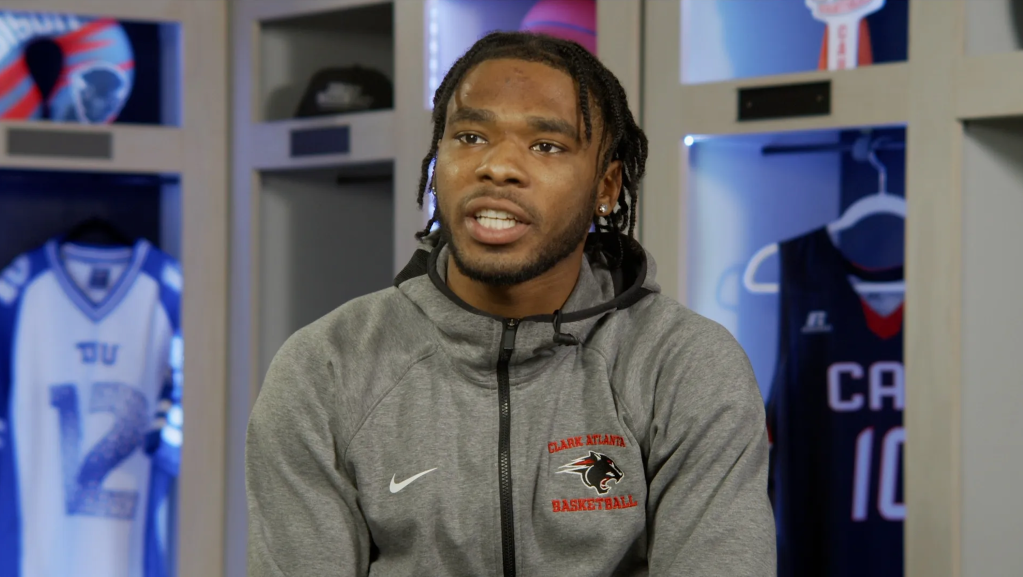It’s been three years since 18-year-old Michael Brown was fatally shot by Darren Wilson in Ferguson, Mo. After receiving great acclaim at this year’s Sundance festival, filmmakers Sabaah Folayan and Damon Davis have brought Whose Streets to the big screen, giving viewers a raw and intimate look at the events that followed the teenager’s death and the activists who made the world take notice.
“I hope [viewers] take away that their experiences are real, that their pain is real, that their perspective is valid,” Folayan tells CASSIUS of Whose Streets. “So often not only do we experience the initial trauma of whatever the oppressive situation might be, but then we have to be traumatized again by being told that it didn’t really happen.”
Whose Streets, which was filmed during the Ferguson uprising in 2014, illuminates the stories of the young people at the movement’s center, including Brittany Ferrell and Alexis Templeton, as well as David Whitt, a recruiter for Copwatch. “There’s just so much that we can never tell,” Folayan says. “We wanted to tell a community story.” Below we discuss the film, Ferguson, and whether or not we’ve made progress since Brown’s death.
Whose Streets is playing now in select theaters. Read more about the filmmakers in our exclusive below.
CASSIUS: This film told multiple stories within the Ferguson uprising. Was the goal to be comprehensive in that way?
Sabaah Folayan: Yeah, absolutely. I mean, I wouldn’t say “comprehensive,” because there’s just so much that we can never tell, but we wanted to avoid creating a situation where you have this kind of monolithic, MLK, Malcolm X-figure that seems like they have the whole movement on their back. In reality, it was a communal effort. We wanted to tell a community story.
C.:What led to the decision to center Brittany and Alexis (who met during the protests and would eventually wed) ?
SF: They were really central to a lot of the energy that was out there. They galvanized a lot of people. A lot of people really respected their work and we were just trying to follow the people at the heart of this movement. Them being two queer women, we felt like we needed to just not shy away from it. We also didn’t wanna over explain it to the point of seeming apologetic about it, and we didn’t wanna give platform to any homophobia, so we really chose to just present it without apology and show the fact that this was a big part of the movement.
C.: What challenges did you face while filming?
SF: Yeah, [during] a lot of the heated moments—and when I say heated moments, I mean the tear gas and that kind of stuff—it was hard to balance between the personal feeling of flight or fight and survival and being there as a director, being there as a Black person, and having the urge to jump in and defend other people you see going through this. Keeping a distance during production was really, really hard. Seeing what was going on, I would constantly ask myself, ‘Is this worth it? Is what we’re doing worth it?’—asking people questions and asking people to relive events that might have been painful enough the first time. There was this constant question of ‘Does this matter?’ I think is a question everybody has when they engage in resistance and protest.
C.: One of the things I found to be very striking was the use of social media imagery, which really added depth and urgency to the film, especially since social networks were such a huge part of that conversation.
SF: People wanna draw comparisons between this movement and the Civil Rights Movement, and [social media] is one of the critical things that is very unique to our generation. Social media was such a crucial part of this because St. Louis is a red city in a red state, so the people who had decided to take to the streets were not met with a huge community or support. In fact, they were met with a lot of the backlash, like you see, so having this digital community let people know they weren’t alone, that somebody was watching, and that what they were doing was important. We wanted to make sure to portray the scope of that conversation.
C.: Do you think we are any closer to solutions regarding police brutality since the filming of this documentary?
SF: I think that Black people are making tremendous progress as far as learning to understand what this system is, what it looks like and how it affects us in terms of being willing to speak up, and like you said, being willing to care for each other and look out for each other. I think we have come a long way because I think for a while we got [set] in a false sense of security to say, ‘Oh, we have a Black president; he’ll take care of it,’ or, ‘We’re equal now and everybody’s good.’ I think we’re starting to come back to that feeling of community we really need.
As far as white folks or folks who are invested in the status quo, I don’t know much progress that they have made. I don’t know if they’re interrogating themselves and building up their self awareness and understanding the ways in which these issues are intertwined and the ways in which to perpetuate racism at this time is to really be cutting off your own nose despite your face because we are a global community and so many of us are Black and brown people. I think it’s really sad and absurd that we still have to be having this conversation, but I think part of the reason we are is because for too long people have been looking to Black people to make the progress. You have people [saying] ‘The first Black president this’ and ‘The first Black woman that,’ when in reality, no, that’s [just] the first time white people have gotten it together enough to recognize Black people as equal and allow that participation. I think next steps involve really turning that lens to white people and really challenging them to make progress with their own issues.
C.: Who do you hope sees this film, and what is the biggest thing you want them to take away from it?
SF: I hope that everybody who goes through systemic racism and oppression and police violence sees this film. I hope that they take away that their experiences are real, that their pain is real, that their perspective is valid, because so often not only do we experience the initial trauma of whatever the oppressive situation might be, but then we have to be traumatized again by being told that it didn’t really happen or that our emotional response to it is wrong. So this is really just to validate, to show their perspective with dignity and really revere the people who put everything on the line for democracy.
Learn more about Whose Streets and find local showtimes at the film’s official website.
















